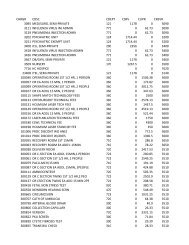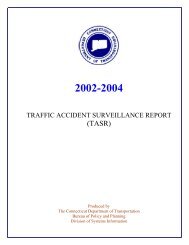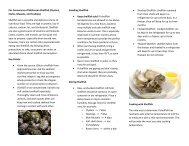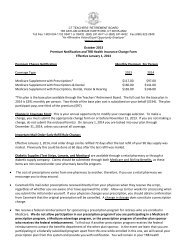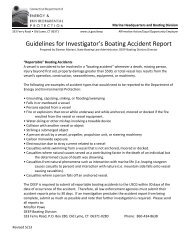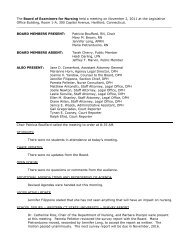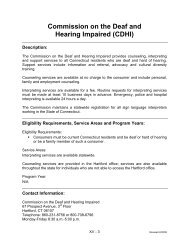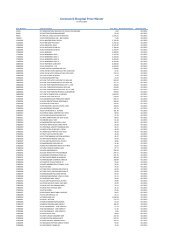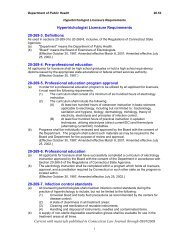Design and Installation Guide - CT.gov
Design and Installation Guide - CT.gov
Design and Installation Guide - CT.gov
Create successful ePaper yourself
Turn your PDF publications into a flip-book with our unique Google optimized e-Paper software.
Section 3: System Configuration<br />
24<br />
August 2010<br />
For sizing dual-pressure systems, the piping from the meter to the pounds-to-inches regulator is sized separately from the piping<br />
downstream of the regulator outlet. This procedure is shown in Examples 4 & 5.<br />
Sizing for a Hybrid System (one that includes both rigid pipe <strong>and</strong> CSST) is accomplished by using the longest run method to<br />
determine the appropriate pipe size for a given load <strong>and</strong> run length. Each segment of the piping system uses the appropriate<br />
sizing table for that particular piping material. This procedure is shown in Examples 6 & 7.<br />
Summation Method:<br />
An alternative sizing method is the Summation Method which considers a summation of the pressure losses through each section<br />
of piping. This procedure is utilized for the designer whose requirements are not satisfied by the previously described<br />
methods. The summation method can be used for system pressures <strong>and</strong> pressure drops other than indicated in the sizing tables<br />
for longest run. This method allows full use of the maximum flow capacity of CSST. In this fashion, a designer can minimize<br />
piping size (or maximize flow capacity) with greater accuracy in more complicated arrangements. The summation<br />
method is shown in Examples 8 & 9.<br />
3.1.7 Modifying an Existing System<br />
Gastite ®/FlashShield fittings transition from CSST to pipe thread (NPT) <strong>and</strong> may be run in conjunction with all other approved<br />
fuel gas piping (iron pipe, polyethylene tubing, copper tubing, etc.). When adding appliances to an existing system the<br />
installer must verify whether the existing system, upstream of the lines to be added, can support the additional load.<br />
A retrofitted line, even when properly sized, added to a system that can't support the additional load, can adversely effect<br />
all the other appliances in the system.<br />
When the existing system will not support the additional load several installation options exist. A new trunk line(s) can be<br />
run replacing the under-sized system upstream of the retrofitted appliances. A dedicated trunk line can be run from the gas<br />
source to the new appliance. The system pressure may be elevated, thus increasing the allowable pressure drop, after which<br />
the existing trunk lines may afford sufficiently higher flow capacity to h<strong>and</strong>le the existing <strong>and</strong> new appliances.<br />
If the piping is visible or the existing run lengths are known, the entire system can be resized using either aforementioned<br />
sizing method (Longest Run or Summation). The system shall be resized with an appropriate sizing table based on the affordable<br />
pressure drop. When the piping is not visible or accessible for measurement, approximated lengths should be<br />
rounded up.<br />
3.2 Sizing Procedures <strong>and</strong> Exercises<br />
3.2.1 Sizing Examples<br />
While the following examples show typical applications of the sizing methods they do not address all of the system configurations<br />
in which they can be used. In general, Longest Run <strong>and</strong> Summation can be used with any pressure or system configuration<br />
(series, parallel, dual-pressure, hybrid, etc.).<br />
The following exercises illustrate various design layouts, pressure drops <strong>and</strong> sizing methods. To further highlight the differences<br />
in methods <strong>and</strong> designs, examples 1-8 use the same appliance layout <strong>and</strong> load.<br />
Gastite Division<br />
603 Hendee Street / Springfield, MA 01104<br />
800.662.0208 / www.gastite.com / gastite@gastite.com




